
Forsythia, is a genus of flowering plants in the olive family Oleaceae. There are about 11 species, mostly native to eastern Asia, but one native to southeastern Europe. Forsythia – also one of the plant's common names – is named after William Forsyth.
Carrabin is a small town located about 43 kilometres (27 mi) east-north-east of Merredin, on the railway line between Merredin and Southern Cross in Western Australia.

Rubus saxatilis, or stone bramble, is a species of bramble widespread across Europe and Asia from Iceland and Spain east as far as China. It has also been found in Greenland.
Stephen Donald Hopper AC FLS FTSE is a Western Australian botanist. He graduated in Biology, specialising in conservation biology and vascular plants. Hopper has written eight books, and has over 200 publications to his name. He was Director of Kings Park in Perth for seven years, and CEO of the Botanic Gardens and Parks Authority for five. He is currently Foundation Professor of Plant Conservation Biology at The University of Western Australia. He was Director of the Royal Botanic Gardens, Kew from 2006 to 2012.
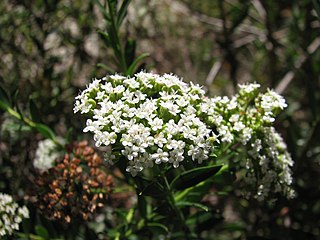
Platysace is a genus of woody perennial herbs and subshrubs in the family Apiaceae. The genus is endemic to Australia.

Mallee, also known as Roe Botanical District, is a biogeographic region in southern Western Australia. Located between the Esperance Plains, Avon Wheatbelt and Coolgardie bioregions, it has a low, gently undulating topography, a semi-arid mediterranean climate, and extensive Eucalyptus mallee vegetation. It has an area of 73,975.59 square kilometres (28,562.13 sq mi). About half of the region has been cleared for intensive agriculture. Recognised as a region under the Interim Biogeographic Regionalisation for Australia (IBRA), it was first defined by John Stanley Beard in 1980.
FloraBase is a public access web-based database of the flora of Western Australia. It provides authoritative scientific information on 12,978 taxa, including descriptions, maps, images, conservation status and nomenclatural details. 1,272 alien taxa are also recorded.
Kalbarri Airport in Kalbarri, Western Australia is owned and operated by the Shire of Northampton. The airport is approximately 10 km (6.2 mi) from the town centre.

Aurinia saxatilis is an ornamental plant native to Asia and Europe.

Mallee are trees or shrubs, mainly certain species of eucalypts, which grow with multiple stems springing from an underground lignotuber, usually to a height of no more than 10 m (33 ft). The term is widely used for trees with this growth habit across southern Australia, in the states of Western Australia, South Australia, New South Wales and Victoria, and has given rise to other uses of the term, including the ecosystems where such trees predominate, specific geographic areas within some of the states and as part of various species' names.
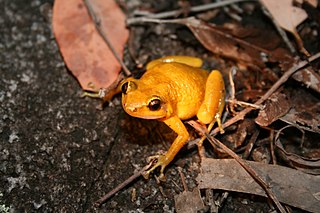
The Black Mountain boulder frog, also known as the rock haunting frog or the Black Mountain rainforest frog, is a species of frog in the family Microhylidae.
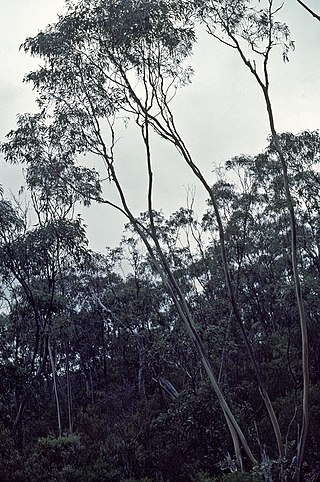
Eucalyptus saxatilis, commonly known as the Suggan Buggan mallee or Mount Wheeler mallee, is a species of mallee or small tree that is endemic to southeastern Australia. It has smooth bark that is shed in ribbons, lance-shaped to curved adult leaves, flower buds in groups of three, white flowers and bell-shaped fruit.
The tiny Pilbara toadlet ) is a species of frog in the family Myobatrachidae. It is endemic to the arid Pilbara region of Australia. It is a burrowing frog and is found in rocky gorges and creeks in the Pilbara following cyclonic rains. The species name saxatilis means "rock-dwelling".
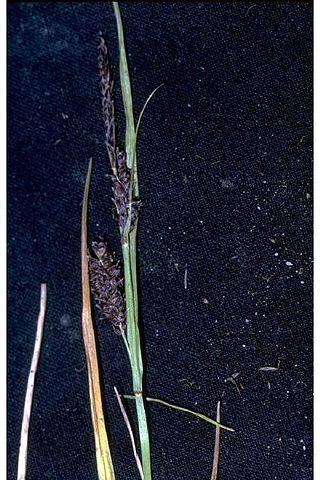
Carex saxatilis is a species of sedge known by the common names rock sedge and russet sedge.
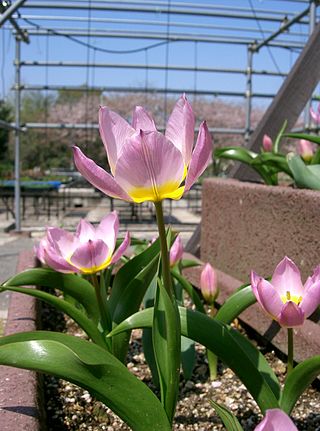
Tulipa saxatilis is a Greek and Turkish species of plant in the genus Tulipa of the family Liliaceae.

Grevillea pauciflora, commonly known as the few-flowered grevillea, or as Port Lincoln grevillea in South Australia, is a species of flowering plant in the family Proteaceae and is endemic to the south of continental Australia. It is an erect to straggly or spreading shrub with linear to narrowly wedge-shaped leaves and red or orange flowers with a red or orange style.
Caladenia saxatilis is a plant in the orchid family Orchidaceae and is endemic to South Australia. It is a ground orchid with a single hairy leaf and one or two pale creamy-green flowers, sometimes with thin reddish lines. It occurs in the southern Flinders Ranges.

The Pilbara shrublands is a deserts and xeric shrublands ecoregion in Western Australia. It is coterminous with the Pilbara IBRA region. For other definitions and uses of "Pilbara region" see Pilbara.

Seringia is a genus of about 18 species of plants in the family Malvaceae. Species of Seringia are native to Australia, New Guinea, and Madagascar. They are small shrubs with soft silken leaves. The flowers are purple or mauve and appear in profusion. The calyx is the most conspicuous part of the flower.
The stony-soil ctenotus is a species of skink found in Northern Territory, South Australia, and Western Australia.












